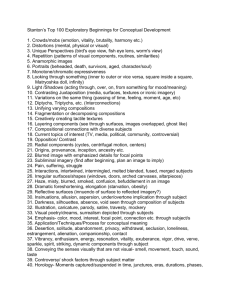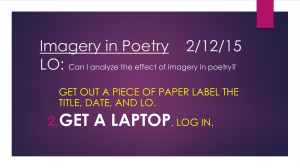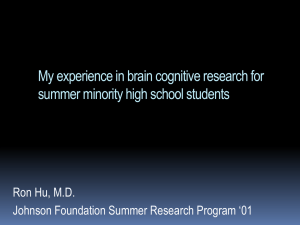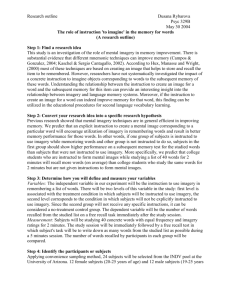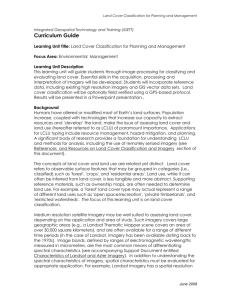Media Imagery and Mass Art- shifting values in
advertisement
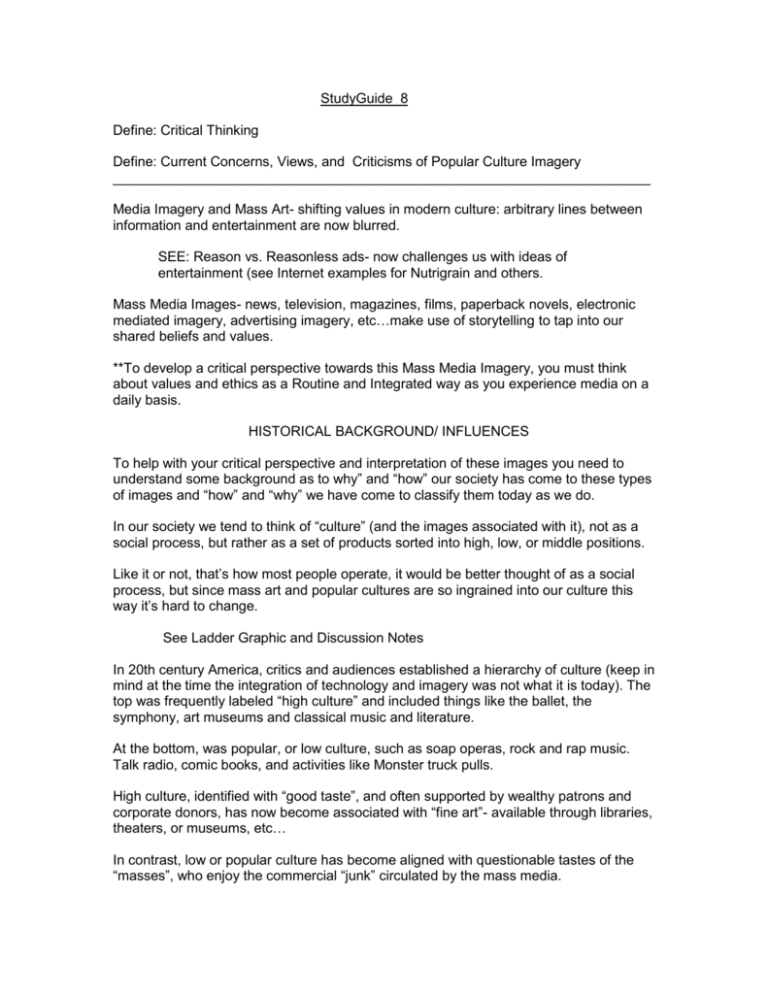
StudyGuide 8 Define: Critical Thinking Define: Current Concerns, Views, and Criticisms of Popular Culture Imagery ______________________________________________________________________ Media Imagery and Mass Art- shifting values in modern culture: arbitrary lines between information and entertainment are now blurred. SEE: Reason vs. Reasonless ads- now challenges us with ideas of entertainment (see Internet examples for Nutrigrain and others. Mass Media Images- news, television, magazines, films, paperback novels, electronic mediated imagery, advertising imagery, etc…make use of storytelling to tap into our shared beliefs and values. **To develop a critical perspective towards this Mass Media Imagery, you must think about values and ethics as a Routine and Integrated way as you experience media on a daily basis. HISTORICAL BACKGROUND/ INFLUENCES To help with your critical perspective and interpretation of these images you need to understand some background as to why” and “how” our society has come to these types of images and “how” and “why” we have come to classify them today as we do. In our society we tend to think of “culture” (and the images associated with it), not as a social process, but rather as a set of products sorted into high, low, or middle positions. Like it or not, that’s how most people operate, it would be better thought of as a social process, but since mass art and popular cultures are so ingrained into our culture this way it’s hard to change. See Ladder Graphic and Discussion Notes In 20th century America, critics and audiences established a hierarchy of culture (keep in mind at the time the integration of technology and imagery was not what it is today). The top was frequently labeled “high culture” and included things like the ballet, the symphony, art museums and classical music and literature. At the bottom, was popular, or low culture, such as soap operas, rock and rap music. Talk radio, comic books, and activities like Monster truck pulls. High culture, identified with “good taste”, and often supported by wealthy patrons and corporate donors, has now become associated with “fine art”- available through libraries, theaters, or museums, etc… In contrast, low or popular culture has become aligned with questionable tastes of the “masses”, who enjoy the commercial “junk” circulated by the mass media. Whether or not we agree with this cultural ladder, the high-low hierarchy has become entrenched in our society. It often determines or limits the ways culture is discussed today. As Artist you may find yourself at times “fighting” the current view of your artform depending on the social and cultural perspective of the time. CURRENT CONCERNS and VIEWS 1) Some critics are concerned that popular culture (and its imagery) in the form such as contemporary movies, television, and music videos distracts individuals from serious literature and philosophy, imposing and/or conditioning the imagination undermining their ability to recognize “better” or “good” art. (insert your view or philosophy here).- The assumption is that because popular forms of culture are made for profit, they cannot be experienced with the same personal intensity as more elite art forms. 2) Another view and concern is that popular culture exploits classics works of literature and art. The best example may be Mary Shelley’s dark Gothic novel, Frankenstein, written in 1818 and ultimately transformed into multiple popular forms. (Many individuals have never read the original work, yet have seen and participated in numerous parodies, spin-offs, and recreations). Today the tale is best remembered by virtue of a 1931, Boris Karloff as the towering monster. In addition to the movies, television turned the take into “The Munsters” a mid1960’s situation comedy. Eventually the monster was resurrected as a sugar-coated Frankenberry cereal. In the recycled forms of the original story, Shelley’s powerful themes about abusing science, and judging people on the basis of appearance are lost and trivialized. 3) Unlike an Italian opera or Shakespearean tragedy, many elements of mass culture have a short life span. The average newspaper circulates for about twelve hours, than lands in the recycle bin or bottom of a birdcage; the average magazine circulates for about five to seven days; a new Top 40 song or video lasts about one month in top rotation space. The average TV series survives for less than 10 weeks. Although endurance does not necessarily denote quality, in the view of many critics, better forms of culture have staying power. 4) Popular culture and its imagery not only undermines or exploits high culture, but has inundated the cultural environment, driving our higher forms of culture and thinking in return “Cheapening” public life. These critics argue that popular forms promote a culture that is 1)unstable and fleeting, 2) that they follow rather than lead public tastes. (In the television industry, this is known as “least objectionable programming” or LOP: Network gatekeepers pander to mediocrity by airing bland, disposable programming that will not disturb or challenge the typical viewer. Current studies show that TV sets are in use in the average American home for more than nine hours a day, exposing adults and children each year to thousands of hours of TV commercials and popular culture. According to the studies, the prevalence of media products prevents and or influences the public from experiencing “genuine art”. Forty or more radio stations are available in most cities; cable systems with at least 72 channels or more are in place 70% of all US households; (study did not include satellite TV); CD/DVD players, Internet Services, and VCRs are now in most households. Some critics feel that the media environment has “squeezed” out what little audience was left to participate in higher art forms and ways of thinking. POLITICAL CONCERNS AND DEMOCRATIC REASONING 5) A final concern is that the impact of popular culture, especially in its visual forms, has undermined democratic reasoning. According to this view, popular media may inhibit social progress by transforming audiences into cultural dupes or drones- seduced by the promise of product or ideas. A few multinational conglomerates, which make large profits from media products and imagery, may be distracting citizens from examining economic disparity and implementing change. Seductive advertising images contradict the actual lives of people, who cannot afford the products offered in the market place. In this environment, art and commerce have become blurred, restricting the audience’s ability to make cultural distinctions. Sometimes called the “Big Mac” theory, this view suggests that people are so addicted to popular media menus that they have lost not only the will to challenge social inequities, but also their critical thinking skills, and discriminating taste for better more profound art and culture.





